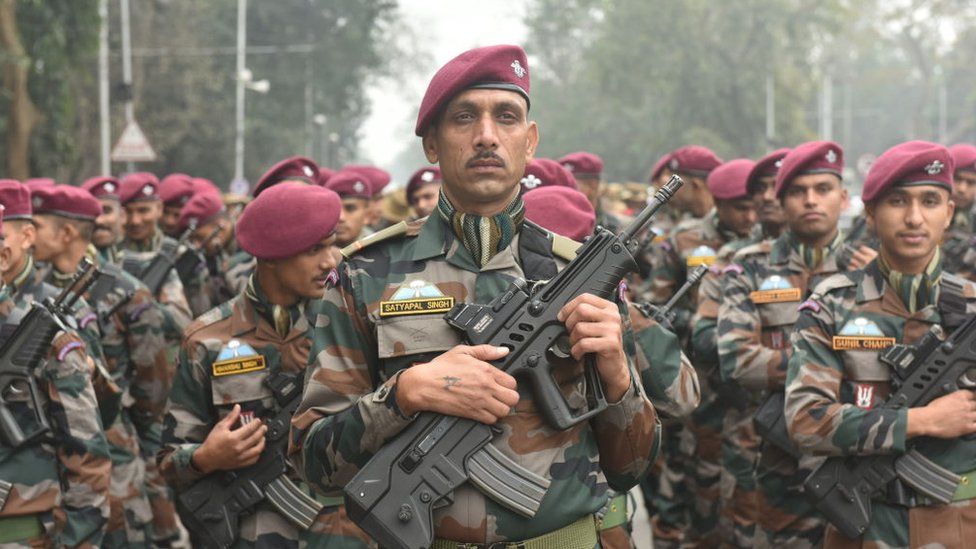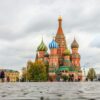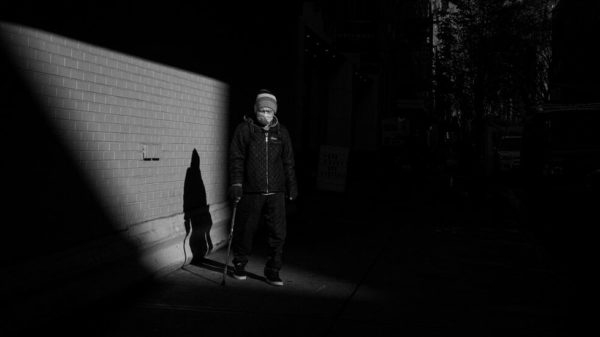A day before India was set to celebrate its 73rd Republic Day, government officials issued an unusual clarification: this year’s parade would not feature a song from Bollywood.
The parade has in fact never included a Bollywood track but the government felt compelled to explain because of a recent controversy. An official handle had tweeted a video that appeared to be a curtain-raiser to the grand annual parade that marks the day: in it, a Navy band played a popular Bollywood hit while others kept the beat by stamping their feet and tapping their rifles.
A social media storm ensued – opposition politicians accused Prime Minister Narendra Modi’s government of diluting the dignity of the armed forces while others said the video made a mockery of the iconic celebration.
The department that had tweeted the video finally said it just wanted to show how the personnel took a break during their “gruelling” rehearsals for the parade.
The controversy, just one of many this year, is unlikely to dampen the excitement of the millions of Indians who watch the event – it’s held in the heart of the national capital Delhi, and telecast live across the country.
Every year, India celebrates 26 January – the day its constitution came into effect, making it a sovereign republic – with a spectacle where it shows off its military strength, technological advances and cultural diversity.
In 1950, that day marked the end of India’s ties to the British empire (although it decided to be a part of the Commonwealth of nations after much debate) – and its first president, Rajendra Prasad, was sworn in.

“Three thousand men of the armed forces marched before the president. The artillery fired a thirty-one gun salute while Liberator planes of the Indian air force flew overhead,” historian Ramachandra Guha writes of the first parade in his book India After Gandhi.
The next year’s parade was vastly different, notes academic Suchitra Balasubrahmanyan.
Its location was shifted from a stadium to Rajpath (formerly King’s Avenue), a “landscape replete with symbols of state”.
“In their new location, the celebrations began to take on the character of a spectacle,” she adds.
Soon, the federal government invited states to take part in a cultural pageant that would also be a part of the parade.

“It was a period of tension when linguistic and regional assertions were making their presence felt,” Ms Balasubrahmanyan writes.
She adds that the parade became an even more vital symbol of presenting an image of a diverse but united country – “a viable, cohesive national identity”.
Language was a particular flashpoint in the late 1950s and early 1960s as the federal government tried to make Hindi the sole official language. This was met with fierce protests in southern states, whose languages and scripts differed completely from Hindi. The resistance was strongest in Tamil Nadu, where the Dravida Munnetra Kazhagam party led huge protests, burning Hindi books and blackening signs written in Hindi.
The government dropped the measure after 26 January 1965, when two protesters set themselves on fire in the state’s capital Chennai (Madras).
As states began sending their own floats, or tableaux – usually based on cultural or historical milestones they wanted to highlight – the parades got longer and more colourful.
For people who live far away from the power centre of Delhi, it still remains a thrill to spot their state’s contribution to the parade rolling along.
Several government departments also join now, showcasing models of India’s achievements in agriculture and science and technology.

For Indians, the parade was primarily a symbolic affair that reinforced their identity as part of a powerful republic, says historian Srinath Raghavan.
It took some inspiration from the grand receptions and processions showcased by the British imperial power, which Indians were already familiar with.
The parade also aims to send a message to the rest of the world about India’s abilities, Mr Raghavan says.
Starting with Indonesian president Sukarno in 1950, India has always invited a foreign dignitary as the chief guest to the parade (though this has been hard since 2021 because of the Covid-19 pandemic).
The list of chief guests is also reflective of the country’s diplomatic relations over the years. India last extended an invitation to a Pakistani delegate in 1965, before the first of three wars with the country. Marshal Ye Jianying, a Chinese Communist party veteran, was the chief guest in 1958, four years before India and China went to war over a border dispute. If Boris Johnson had attended in 2021, he would have been the sixth UK leader to do so.
Barack Obama became the first American president to attend the parade in 2015 – proof of how much relations between India and the US had improved since the end of the Cold War. Indian media called it a “diplomatic coup” for Mr Modi, then in his first year of office.
“Mr Obama’s acceptance of PM Modi’s invitation this year was seen here as a great tribute to India, a sign of the country’s arrival on the world stage,” wrote The New York Times.
Though celebrations have been scaled down over the past couple of years due to the pandemic, it still remains a matter of pride for Indian states and military regiments to be chosen to participate in the parade.
Mr Raghavan says that for states, “it’s a way for their role to be acknowledged and accomplishments to be recognised by other constituents of the nation state”.

You might also be interested in:
This video can not be played
To play this video you need to enable JavaScript in your browser.













